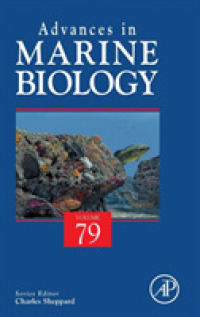Full Description
The Right of Nonuse provides a fresh and remarkably different perspective on the real causes of the ills plaguing the world's resources and environment. It re-examines the very nature of nature, and from this new perspective, argues that what is needed is for humans to grant to natural resources a legal right to be left alone - a right of nonuse. In the process, it explores the following questions: Why do natural resources continue to be depleted and removed at an alarming rate? Why are species becoming extinct at a pace that may be unprecedented? Why does the environment continue to be polluted? Why do the weather and climate seem to be changing? Perhaps most important, why have laws, legal institutions and governments been unable to address and correct these problems?
Jan Laitos reviews the history of our relationship with the natural environment and develops new ways of thinking about nature and its protection. Instead of proceeding with human-based goals, Laitos argues that we should protect environmental resources for their own intrinsic value. Instead of giving humans more and more rights to clean up the environment, and to halt resources depletion, a right of nonuse held by the resource itself should be created. Natural resources have always possessed this parallel nonuse function, and society should recognize and legitimize it.
Contents
Acknowedgments ; Part I - INTRODUCTION ; Chapter 1: The Nature of Nature ; Part II - A SOCIAL - ECONOMIC HISTORY OF RESOURCE USE AND NONUSE ; Chapter 2: Defining Natural Resources Use and Nonuse ; Chapter 3: Era I - The Age of Human Survival ; Chapter 4: Era II - The Age of the Market ; Chapter 5: Era III - The Age of Property ; Chapter 6: Era IV - The Anthrocene Age ; Chapter 7: Era V - The Age of Ecocentrism ; Part III - A LEGAL HISTORY OF RESOURCE USE AND NONUSE ; Chapter 8: An Introduction to Law and Natural Resources ; Chapter 9: First Generation Laws: Creating Use Interests in Natural Resources ; Chapter 10: Second Generation Laws: Protecting Human Nonuse Interests ; Chapter 11: Proposed Second Generation Laws: Protecting Human Nonuse Interests by Acknowledging the Public Interest in Natural Resources ; Chapter 12: Toward a Third Generation of Non-Anthropocentric Resource Nonuse Laws ; Part IV - REVEALING THE NONUSE COMPONENT OF NATURAL RESOURCES ; Chapter 13: The Biology of Resource Nonuse ; Chapter 14: The Science of Resource Nonuse ; Chapter 15: The Economics of Resource Nonuse ; Part V - TOWARD A LEGALLY-ACKNOWLEDGED RIGHT OF NONUSE ; Chapter 16: The Problem of Government Regulation: The Emerging Shift from Anthropocentric to Ecocentric Nonuse Laws ; Chapter 17: The Problem of Rights Creation: Can Natural Resources Have Legal Rights? ; Chapter 18: The Problem of Standing: May Natural Resources Raise Their Own Right of Nonuse? ; Index








